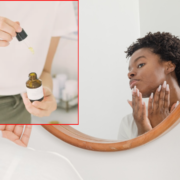Let’s get started with some tips on how to dye your hair at home like a pro!
When it comes to coloring your hair at home, there is a wide variety of products, shade options, and techniques to choose from. Whatever your hair color aspirations, we have the secrets on how to achieve (and maintain) the look of your dreams with balayage, dark brown, auburn, blonde, highlights, and more.
The following are some things to bear in mind: You’ll want to leave substantial best professional hair color changes to the professionals. To make a transition from one color family to another, many operations are often required, which are best left to a salon colorist who is experienced in assessing tones and minimizing damage. “ Maintain a color that is two shades lighter or darker than your present color when dying your hair at home yourself.
Is it safe to color your hair at home?
The majority of the time, coloring your hair at home is completely safe, provided that you follow the guidelines on the product’s label carefully.
Let’s get started with some tips on how to dye your hair at home like a pro!
Find the Shade: To find the best color at the store, look at the ones that are close to your current one. Boxed dyes are usually put on a shelf in a certain way: by color. Choose from the next two shades on either side of your hair that is close to your best professional hair color.
Buy Enough: You don’t want to run out of dye in the middle of the process, so plan beforehand. You may need two boxes to cover your entire head if your hair is shoulder length or longer. The thickness of your hair will determine how many boxes you will need. If you end up with a few extra boxes, you can either keep them for future use or return them to the store.
Strand Test: Despite the fact that it is easy to skip it, the strand test is essential, especially when trying a new color. Color a few cut or hidden hairs first, and then examine the results before making a final decision. Hair that turned orange and purple is a regular horror story from testers who didn’t follow these instructions.
Protect your Skin: There’s nothing more embarrassing than waking up with different color stripes across your forehead. Before applying color, use clear solid lip balm along your hairline and around your ears to prevent stains. This is preferable to using an oil-based salve to protect skin from stains like a goopy salve.
Read: How to Improve My Skin Tone?
Setup Tools: Consider yourself a surgeon, and prepare your tools on the counter before you begin working. Before you begin, make sure you have read the associated instructions. You’ll be clear on the procedures and won’t have to stop in the middle of the process, which could result in blunders such as leaving the dye on for too long or leaving parts uncoloured.
Dye on Dry Hair: Hair color specialists (as well as the instructions on the packaging of best professional hair color) recommend that you dye your hair when it is dry. When hair is drenched with water, it is possible that the dye will not adhere to the hair strands or will get diluted, resulting in an undesired outcome.
To maintain a healthy scalp and hair, gray hair should not be colored with the best hair dye for gray for more than every four weeks. Dyeing too often with the best hair color to cover grey hair to become brittle, dull, and damage your hairline.
Start at the Root: You should start with the roots of your hair while dying it. Because they are the first place where hair regrowth develops and the least damaged area of the hair, they require the most color and the longest processing time. Allow the best professional hair color to develop for the amount of time specified on the packaging’s instruction manual. Then comb it through the remainder of your hair to ensure that it is distributed evenly and that you do not have a two-tone look. Work in four to six areas, similar to how salon professionals do it.
Two Mirror is Good: It can be challenging to color the back of your head. As you color, use a handheld mirror to check the back of your head in the bathroom mirror to ensure that you don’t miss any areas of color.
Use Shower Cap: Wearing a disposable shower hat over your head will help to keep the color from dropping while it is processing.
Avoid too much Water: It’s the first rule for preserving color. Water, not shampoo, is the primary cause of hair color fading. Dye molecules can drain out of your hair every time it is saturated, whether you use shampoo or not. Chlorine, salt, and other elements in water can raise the hair’s cuticle, increasing the loss of color.
Use Colour safe products: No shampoo is completely color safe since all shampooing necessitates wetting the hair, and water itself is a dye-removing agent. Even though sulfate free hair color shampoos are supposed to be more effective at slowing color loss, experiments have revealed that they are always considered better than shampoos containing sulfates.
Avoid sun damage: Keep your hair out of the sun (or cover it with a hat) to prevent it from lightning. The sun acts as a bleach, dissolving not only artificial color but also the melanin that gives natural hair its pigmentation, breaking down both. Consequently, UV protection is equally crucial for your hair as it is for your face. Given that there is no such thing as sunscreen for hair, it’s best to cover it with a hat or a scarf when you’re going to be out in the sun for an extended amount of time, such as at the beach.
Bottom Line
At home, hair dye should be about keeping the shade that has been custom-designed for you by colorists, rather than making drastic modifications to your hair color. Colorists do not recommend applying these yourself because they are incredibly difficult to position and can end up looking like tiger stripes if done incorrectly. When it comes to applying home hair dye, though, stick to the region surrounding your face where you can see and control the color.
Read: 15 Best Natural Hair Dyes for Long-Lasting (and Nontoxic) Color for 2022
-

1 Top 5 Vitamin C Serums
-

2 Facing Skin Issues this Winter? Follow these Dermatologically Recommended Tips for a Smooth Skin!
-

3 Five Easy Steps On How To Be A Beauty Guru
-

4 10 Beauty Services That Help You in Revitalizing Your Body
-

5 Sellers of Black Market Botox are Cheating Innocent Girls and Women on Social Media
-

6 What Are Lash Extensions?
-

7 Learn About the Benefits of Lash Extensions

